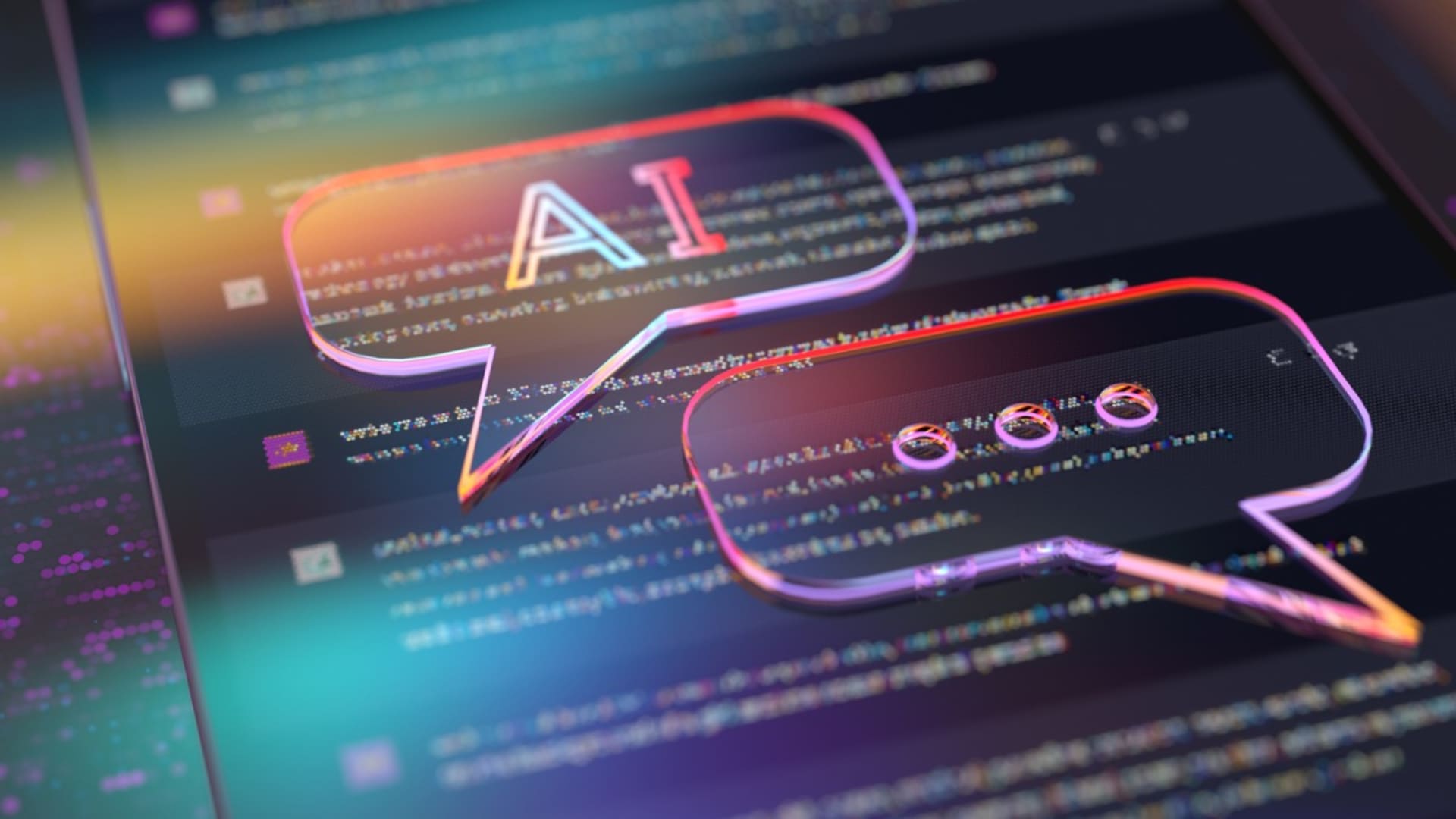Artificial intelligence (AI) has been transforming every major industry—including healthcare, financial services, manufacturing, and hospitality—for many years. However, this revolution has intensified recently. Educators and students have seen how it can impact the education landscape, and BairesDev has been a leader in helping institutions incorporate powerful education technology (EdTech).
EdTech can be part of the classroom in a variety of ways. It can provide supplemental assistance to students, help instructors perform their duties, and ensure behind-the-scenes tasks such as tracking student progress are performed consistently and accurately. The right EdTech can give instructors more time to focus on higher-level teaching concepts and provide tools to ensure each student is learning in a way that is comfortable for them.
As AI becomes integrated within this industry, it is providing educators with the means to perform tasks in new ways. But, in even more exciting developments, it is creating new functionality, such as personalized learning, that is beneficial to both instructors and students. In the following sections, we explore how AI-based personalized learning can help students and many other ways in which AI-based solutions are shaping the future of education.
Personalized Learning
One of the most beneficial improvements AI-based educational systems can deliver is personalized learning, otherwise known as individualized learning. While delivering the same curriculum to classrooms of students can be effective, delivering lessons at the pace of each student can be even more so, especially for those who are far ahead of or far behind their peers in the learning process.
Additionally, each student has a unique learning style that AI-based systems can adapt to. These applications can provide games, customized programs, and other features to promote learning. Here’s how they work:
- Games. AI-powered games provide learning experiences that adapt to individual learning styles and speeds by analyzing the player’s performance and adjusting the game’s difficulty accordingly. This process provides valuable feedback to both instructors and students and makes education more effective and accessible for students at a variety of levels.
- Customized programs. With applications that adjust to each student’s needs, the educational experience can be based on the next concept they are ready to learn rather than on a generic process that students are forced to fit into. The eLearning Industry notes that customized programs include adaptive learning, intelligent tutoring, personalized recommendations, data-driven insights, multimodal learning, personalized assessments, and individualized learning paths.
- Other features. Features such as natural language processing enable students to learn with AI-based applications in conversational ways that feel familiar to them. For example, such a program might guide an elementary student through a math problem or help them identify parts of speech in a story.
An example of this type of platform is one that identifies knowledge gaps, facilitates teacher interventions, makes recommendations for personalized study plans, and provides resources to save teachers time. It is then important to know how to create AI tools and how to use AI-powered innovations that can disrupt traditional education.
Smart Textbooks
Another highly valuable tool to emerge with AI in education is smart textbooks, which are textbooks in e-book formats. These electronic versions offer more interactive and engaging features than the static pages of paper books. The following features can be found in smart textbooks:
- Chapter summaries – brief synopses of each chapter to help ensure students identify all the main ideas in their readings
- Study guides – questions to help students comprehend readings
- Flashcards – simple learning tools to help with memorization tasks
- Real-time assessments and feedback – quizzes and other brief checks to help students know how well they are progressing and what they can do to reach their goals
- Practice tests – tests that aren’t counted toward students’ grades but that give them practice in responding to the types of questions likely to be on the real test
- Note-taking – the ability to write students’ own understanding of the text or write questions to ask their instructor or educational chatbot
These features can be used by students in a personalized way. For example, they can take as many practice tests as they want until they feel confident that they will be able to pass the real exam.
More Accurate Testing
Testing is highly important in education because it helps instructors understand how much students know, both individually and as a group. This information is useful for adjusting course elements for all students and for personalizing coursework for each one.
One aspect of accurate testing is ensuring students are adhering to testing standards. During classroom or online tests, AI-based applications can track each student’s actions through web cameras, microphones, and web browsers, including performing a keystroke analysis to ensure adherence to testing guidelines.
While testing is a valuable tool, analysis of test results across time is even better, as it can help instructors understand patterns and initiate corrective instruction as a result. AI-based systems can identify these patterns across each student’s test results. They can also help instructors understand areas that a large percentage of students are struggling with, thereby assisting them in effective lesson planning.
AI-based systems can also deliver adaptive testing, which guides students to what they are ready to learn. One example of this type of platform is a web-based assessment tool that leverages adaptive questioning to determine knowledge and knowledge gaps before pinpointing the topics a student is prepared to learn. It also adjusts according to how students’ learning is progressing.
Improved Access
Many learners are challenged by various aspects of the educational process:
- Having a language other than English as a first language
- Having a hearing or visual impairment
- Having problems with coordination
- Being neurodivergent
AI-based systems can help in the following ways:
- Translate text from one language to another to ensure optimal comprehension of the material being presented
- Add subtitles to films and recordings so students with varying levels of proficiency with a language can still learn together
- Translate visual images into sound, or vice-versa so students with all abilities can understand audio and video presentations
- Use voice-based commands rather than keyboards, mice, and touchpads so students who are unable to use those devices can still participate
- Presenting information in ways that are sensitive to differences in individual brain function and behavioral traits to enable optimal inclusion within each classroom
Regarding help with neurodivergence, a recent Fast Company article stated, “Neurodivergent students—who often face challenges with processing information—have the most to gain [from AI]…. [Personalized learning experiences] may result in more inclusive and accessible classrooms, in which every student’s strengths and challenges are supported.”
Task Automation
Instructors within all educational contexts—from K–12 teachers to university educators—have a wide range of tasks to keep up with:
- Preparing lesson plans
- Teaching classes
- Leading activities and labs
- Assigning and grading homework
- Providing 1–1 instruction for students who fall behind
- Documenting student progress
- Maintaining discipline
- Working with parents
- Creating learning resources
While some instructors may have assistants, many must complete all these tasks themselves. AI can perform some of them, freeing up instructors for leisure time or for performing more high-level tasks such as developing learning resources. The variety of tasks AI can help with include those listed here:
- Automatically respond to student inquiries
- Grade assignments and tests
- Create lesson plans
- Provide tutoring
- Analyze student progress
As AI-driven processes take over some of these functions, instructors can perform tasks that machines are unlikely to be able to help with, such as offering encouragement to students, communicating with parents, and implementing new educational models. All of these processes contribute to personalized learning.
Smart Content Creation
Instructors must develop a wide range of content to effectively communicate important concepts to students. They include the following types:
- Information visualization. When instructors lack access to certain resources, AI-based content can include simulations of real-life experiences such as lab experiments.
- Lesson generation. One of the primary content types instructors must develop is lesson plans. AI-based systems and applications can generate minimal or extensive lesson plans that instructors can use to create enriching experiences for students.
- Online videos or lectures. Some instructors teach classes online as well as in the classroom and must make their lectures available for all students. This process may involve audio, video, or transcript development.
- Digital media. These elements may include images, screen captures, movie clips, or PowerPoint presentations.
- Syllabi. Instructors must create syllabi for each class to help students know what to expect throughout the course. They typically include course objectives, the number of credit hours the course satisfies, modules to be covered, grading criteria, other expectations, and how to reach the instructor.
AI-driven platforms, including language learning models such as ChatGPT, can help to develop all these types of content and others. Such materials can be made available on an as-needed basis, further personalizing the educational process.
Supplemental Instruction
Many students need support or supplemental instruction for a variety of reasons. They could be behind with their coursework or need the information presented to them in a way that reflects their preferred learning style. In the past, these students would have turned to humans for tutoring, including instructors, fellow students, and professional tutors. Now they can take advantage of AI-based tools, including chatbots.
Chatbots offer numerous advantages:
- Available 24/7/365. Chatbots are always available, so students can take advantage of them whenever they are ready to learn.
- Promote independent learning. Because they are so readily available, chatbots promote student learning at their own pace without having to wait for their instructor to become available.
- Consistent. Chatbots provide the same information to each student.
- Provide opportunities for students to give feedback. In higher learning environments, student feedback to instructors is critical for ensuring the instructors are as effective as possible and for supervisors to provide appropriate guidance.
- Impersonal. For students with specific challenges, such as those who suffer from social anxiety, an impersonal learning guide may be more helpful than a human.
AI-based services can also match students to tutors based on their needs and the qualities they are looking for. All these aspects of educational chatbots contribute to personalized learning.
Generative AI
As ChatGPT and similar applications have been introduced in recent months, some educational institutions have recoiled from them, believing that students who use them may be missing out on critical learning opportunities. Some are going so far as to strictly ban the use of generative AI and punish students, sometimes severely, if they break this rule. AI detection tools enable educators to determine when students have done so.
Other institutions are taking an entirely different approach, embracing and even encouraging the use of generative AI tools. Their guiding philosophy is that AI technology is becoming more a part of everyday life all the time, and it makes sense to provide students with opportunities to become more familiar with it. The International Baccalaureate, a qualification body, likens these tools to others students use, such as calculators, spell check, or language translation applications. It has announced that students may quote from work generated by ChatGPT.
Assuming more institutions come to embrace ChatGPT and similar platforms, the nature of learning may need to lean more toward skills that such platforms cannot replicate:
- Asking questions rather than seeking definitive answers. The power of asking questions in education should not be underestimated. When students learn how to ask the right questions, they are gaining a valuable skill for their professional lives.
- Analyzing processes. Students additionally benefit when they learn not just “what” but “how” or “why.” For example, in the context of history, what events happened when are important, but why they happened can often be more illuminating.
- Debating pros and cons. When students debate both sides of an argument, they learn that there is not always one right answer and that the truth is often nuanced rather than black or white.
- Working together in groups. Working together on teams is another valuable skill for the workplace, and students are encouraged to do more of it in environments where AI-based platforms are used.
- Using critical thinking, communication, and presentation skills. Additional skills that are useful for higher levels of learning and, eventually, the workplace are critical thinking, clear communication, and presentation skills.
In describing how educators can adapt to AI in their field, the presenter in the following video puts the philosophy another way: “Ask questions AI can’t answer.”
As a result of framing education in a new way, AI-based technology can help both educators and students evolve along with technology and society. Students also become independent thinkers and learners when developing these skills.
Virtual and Augmented Reality
Immersive learning experiences that can be delivered with AI-driven virtual and augmented reality (VR and AR) can be highly valuable in helping students at all levels understand various concepts. For example, middle school students may gain a deeper understanding of history by being guided in an immersive scene from the period they are learning about. High school students might learn about scientific concepts by examining 3D models. Medical students might use a VR program to learn how to perform specific surgeries.
Further, these programs can offer more than just objects and scenarios. They can also provide labels and explanations to enhance student understanding. Combined with personalization features, they can offer challenges based on each student’s progress.
Classroom Comfort
Students learn best when their environment is comfortable and conducive to the educational process. Two of the most important factors are temperature and lighting. If a room is too warm or cold, students can be distracted from their studies. If lighting is insufficient, students may have difficulties seeing educational materials being presented to them. These issues can be addressed with AI solutions that automatically adjust the temperature and lighting within classrooms to optimal levels.
Further, AI-based technology can analyze other classroom conditions, such as occupancy rate and the amount of space between students. A higher concentration of students can lessen the impact of instructors, so analysis of this factor can let them know when an assistant could be useful. Space issues can be very important to certain individuals as well as during public health emergencies such as the COVID-19 pandemic.
The Future of EdTech
AI-based systems, applications, and platforms offer many advantages, as we have seen in the sections above. But there is also a potential for downsides, including the cost of AI-powered educational tools, the lack of human interaction between instructors and students, and privacy concerns.
The blossoming EdTech industry has a role to play in ensuring these possible disadvantages don’t undermine the powerful advantages of AI in education. A recent Forbes Young Entrepreneur Council post offers advice to companies that offer EdTech services. It is summarized here:
- Work to make AI technology affordable and accessible to a wide range of schools.
- Aim to develop tools that augment, rather than replace the role of instructors.
- Find ways to ensure sensitive personal data is properly secured.
- Continue to improve the capabilities of AI-based systems.
- Use ethical standards and follow relevant laws and regulations to develop AI tools.
With these guidelines, AI-based learning tools can provide a strong foundation for personalized learning and greater instructor and student success.
If you enjoyed this, be sure to check out our other AI articles.






